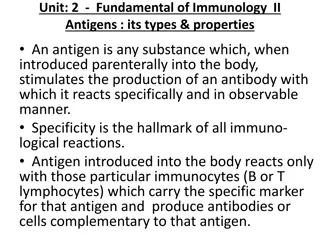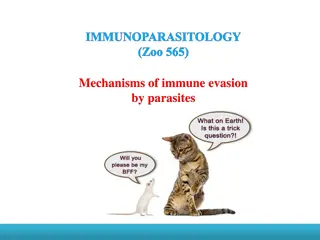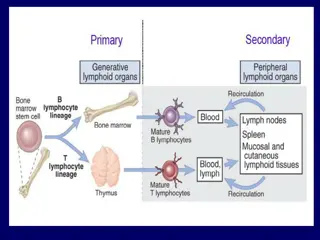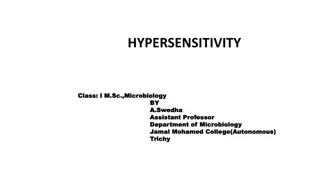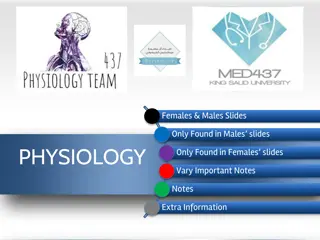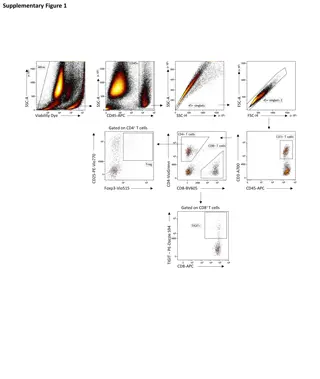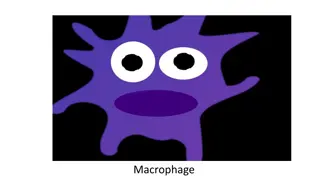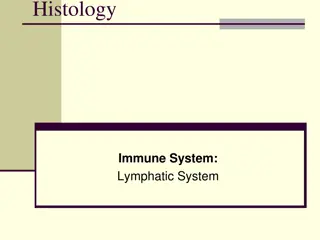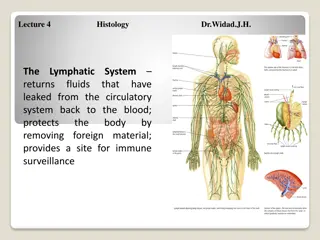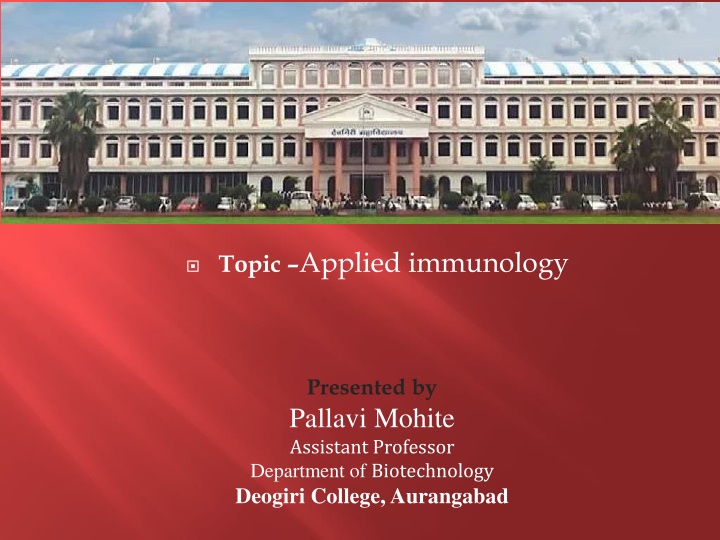
Phagocytes and Macrophages in the Immune System
Learn about the role of phagocytes, including monocytes, and macrophages in the immune system's defense mechanisms. Discover how these cells help protect the body from foreign particles, bacteria, and cellular debris while initiating adaptive immune responses. Explore the functions and differentiation of monocytes into macrophages, providing essential insights into the body's innate immunity.
Download Presentation

Please find below an Image/Link to download the presentation.
The content on the website is provided AS IS for your information and personal use only. It may not be sold, licensed, or shared on other websites without obtaining consent from the author. If you encounter any issues during the download, it is possible that the publisher has removed the file from their server.
You are allowed to download the files provided on this website for personal or commercial use, subject to the condition that they are used lawfully. All files are the property of their respective owners.
The content on the website is provided AS IS for your information and personal use only. It may not be sold, licensed, or shared on other websites without obtaining consent from the author.
E N D
Presentation Transcript
Topic Applied immunology Presented by Pallavi Mohite Assistant Professor Department of Biotechnology Deogiri College, Aurangabad
Immune response Class M.Sc. Biotech Pallavi Mohite Asst. Prof. DCA
Phagocytes are a type of white blood cell that use phagocytosis to engulf bacteria, foreign particles, and dying cells to protect the body. They are a key component of the innate immune system. There are three main groups of phagocytes: monocytes and macrophages, granulocytes, and dendritic cells, all of which have a slightly different function in the body.
Monocytes are found in the bloodstream. They circulate around the body, and when a tissue is infected or inflamed they may leave the bloodstream and enter the tissue. Monocytes are the largest type of phagocyte, with a kidney bean shaped nucleus when seen under a microscope. In the tissue they differentiate into macrophages, which form the major resident population of phagocytes in normal tissues. If a particular set of signals are present, it is also possible for monocytes dendritic cells in the tissues. to differentiate into
Macrophages are derived from monocytes and are found in the tissues. They have a major role as a first defence mechanism in phagocytosis of cellular debris, microbes and any other foreign substances. They also help initiate the adaptive immune response by presenting antigens to T cells and secreting factors to induce inflammation and recruit other cells.
Macrophages may be termed differently depending on their location
dendritic cells act as a link between the innate and the adaptive immune systems. Dendritic cells can be recognised by the presence of multiple cytoplasmic projections from their surface, giving them a large surface area to volume ratio that aids close contact with multiple cells. These processes look similar to the dendrites of neurons, which gave dendritic cells their name. As immature dendritic cells they travel in the bloodstream and migrate through tissues and continually sample the via macropinocytosis. pathogens they find
Following phagocytosis, the cell becomes mature and migrates to a peripheral lymphoid organ such as a lymph node, the spleen, lymphoid tissue to present the antigen to a T cell. This then activates the T cell to initiate an adaptive immune response. or gut-associated
Granulocytes are a group of cells with dense granules in their cytoplasm, and include neutrophils, eosinophils, and basophils. Neutrophils are the most phagocytic of these cells: they are the most abundant white blood cell, and can be identified by their granular cytoplasm and lobulated nuclei (usually 2-5 lobules). They are formed from myeloid stem cells found within bone marrow. They are normally found within the bloodstream, but during the acute phase of infection they are among the first inflammatory cells to reach the site of infection. They are particularly specialised at killing intracellular pathogens due to cytoplasmic granules with antimicrobial peptides, enzymes, and reactive oxygen species. 1. toxic substances such as
Phagocytosis is an elegant but complex process for the ingestion and elimination of pathogens, but it is also important for the elimination of apoptotic cells and hence fundamental for tissue homeostasis. Phagocytosis can be divided into four main steps: (i) recognition of the target particle, (ii)signaling to activate machinery, (iii) phagosome formation, and (iv) phagolysosome maturation. the internalization
Phagocytes must recognize a large number of different particles that could potentially be ingested, including all sorts of pathogens and also apoptotic cells. A variety of discrete receptors are present on the cell surface of phagocytes that distinguish the particle as a target and then initiate a signaling cascade that promotes phagocytosis. The receptors on the Phagocytes directly recognize specific conserved molecular components on the surfaces of microbes, such as cell wall components of bacteria and fungi and are called as pathogen-associated molecular patterns (PAMPs). The receptors that recognize PAMPs are called pattern recognition receptors (PRRs).
Nonopsonic receptors can recognize directly molecular groups on the surface of the phagocytic targets. It triggers direct phagocytosis.
Opsonic receptors: Phagocytes can recognize the foreign particle through soluble particles present on them. Called as opsonins. Opsonic receptors recognize host-derived opsonins that bind to foreign particles and target them for ingestion. Opsonins include antibodies, mannose-binding lectin, and milk fat globulin (lactadherin) Opsonins function as a bridge between the phagocyte and the particle to be ingested. complement, fibronectin,




